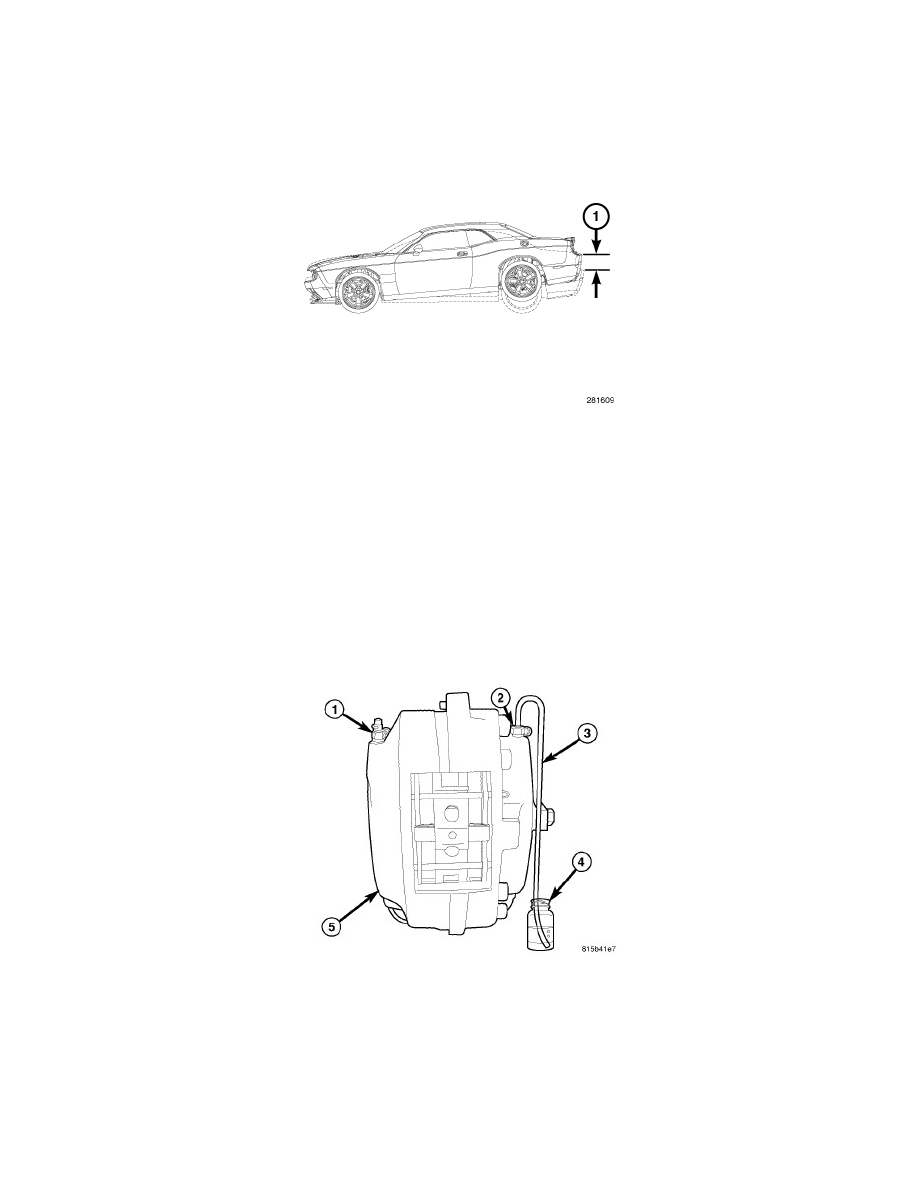Challenger SRT-8 V8-6.1L (2009)

7. If equipped with anti-lock brakes, and the hydraulic control unit needs to be bled, then rebleed the base brakes. See: .
8. Once all brakes are bled, check brake pedal travel. If pedal travel is excessive or has not improved, some air may still be trapped in the brake
hydraulic system. Rebleed the brake system as necessary.
9. Test drive vehicle to make sure the brakes are operating properly and pedal feel is correct.
MANUAL BLEEDING METHOD
NOTE: To bleed the base brake system manually, an assistant's help is required.
NOTE: To make sure all air is bled from the ICU or junction block in a timely manner, it is recommended to raise the rear of the vehicle
approximately 5° higher than the front or approximately 254-305 mm (10-12 inches) as measured at the rear bumper (1).
1. Raise and support vehicle placing rear of vehicle approximately 5° higher than the front or if measured at the rear bumper (1), approximately
10-12 inches above level. It will be necessary to add extra support stands under vehicle to support this angle.
NOTE: Use the following wheel circuit sequence for bleeding the brake hydraulic system to adequately remove all trapped air from the brake
hydraulic system.
-
Right rear wheel
-
Left rear wheel
-
Right front wheel
-
Left front wheel
REAR BRAKES
1. If installed, remove the rubber dust caps from both bleeder screws on each caliper.
2. Start at the first wheel circuit that needs to be bled (See list in above note), attach a clear hose (3) to the inboard bleeder screw at that the brake
caliper and feed the other end of hose into a clear jar (4)containing enough fresh brake fluid to submerge the end of the hose.
3. Have an assistant pump the brake pedal three or four times, then hold it down before the bleeder screw is opened.
CAUTION: Open the bleeder screw at least one full turn when instructed. Some air may be trapped in the brake lines or valves far upstream,
as far as ten feet or more from the bleeder screw. If the bleeder screw is not opened sufficiently, fluid flow is restricted causing a
slow, weak fluid discharge. This will NOT get all the air out. Therefore, it is essential to open the bleeder screw at least one full
turn to allow a fast, large volume discharge of brake fluid.
